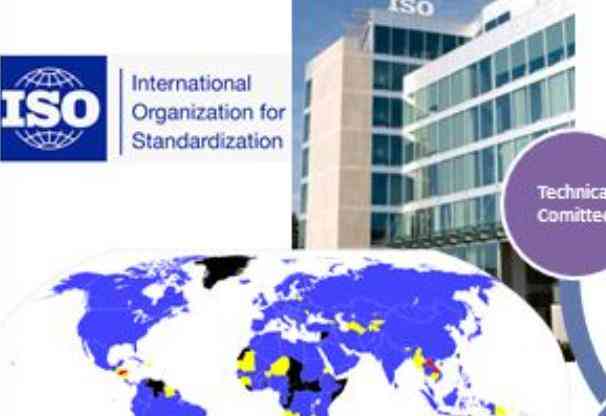|
2003-01.Slovenski inštitut za standardizacijo. Razmnoževanje celote ali delov tega standarda ni dovoljeno.Železniške naprave - Komunikacijski, signalni in procesni sistemi - Signalno-varnostni elektronski sistemiBahnanwendungen - Telekommunikationstechnik, Signaltechnik und Datenverarbeitungssysteme - Sicherheitsrelevante elektronische Systeme für SignaltechnikApplications ferroviaires - Systèmes de signalisation, de télécommunications et de traitement - Systèmes électroniques de sécurité pour la signalisationRailway applications - Communication, signalling and processing systems - Safety related electronic systems for signalling45.020Železniška tehnika na splošnoRailway engineering in general35.240.60Uporabniške rešitve IT v prometuIT applications in transportICS:Ta slovenski standard je istoveten z:EN 50129:2018SIST EN 50129:2019en01-februar-2019SIST EN 50129:2019SLOVENSKI
STANDARDSIST-TP CLC/TR 50506-1:2007SIST-TP CLC/TR 50506-2:2010SIST EN 50129:2003SIST-TP CLC/TR 50451:20071DGRPHãþD
EUROPEAN STANDARD NORME EUROPÉENNE EUROPÄISCHE NORM
EN 50129
November 2018 ICS 93.100
Supersedes
CLC/TR 50451:2007, CLC/TR 50506-1:2007, CLC/TR 50506-2:2009, EN 50129:2003
English Version
Railway applications - Communication, signalling and processing systems - Safety related electronic systems for signalling
Applications ferroviaires - Systèmes de signalisation, de télécommunications et de traitement - Systèmes électroniques de sécurité pour la signalisation
Bahnanwendungen - Telekommunikationstechnik, Signaltechnik und Datenverarbeitungssysteme - Sicherheitsrelevante elektronische Systeme für Signaltechnik This European Standard was approved by CENELEC on 2018-06-07. CENELEC members are bound to comply with the CEN/CENELEC Internal Regulations which stipulate the conditions for giving this European Standard the status of a national standard without any alteration. Up-to-date lists and bibliographical references concerning such national standards may be obtained on application to the CEN-CENELEC Management Centre or to any CENELEC member.
This European Standard exists in three official versions (English, French, German). A version in any other language made by translation under the responsibility of a CENELEC member into its own language and notified to the CEN-CENELEC Management Centre has the same status as the official versions. CENELEC members are the national electrotechnical committees of Austria, Belgium, Bulgaria, Croatia, Cyprus, the Czech Republic, Denmark, Estonia, Finland, Former Yugoslav Republic of Macedonia, France, Germany, Greece, Hungary, Iceland, Ireland, Italy, Latvia, Lithuania, Luxembourg, Malta, the Netherlands, Norway, Poland, Portugal, Romania, Serbia, Slovakia, Slovenia, Spain, Sweden, Switzerland, Turkey and the United Kingdom. European Committee for Electrotechnical Standardization
Comité Européen de Normalisation Electrotechnique Europäisches Komitee für Elektrotechnische Normung CEN-CENELEC Management Centre: Rue de la Science 23,
B-1040 Brussels © 2018 CENELEC All rights of exploitation in any form and by any means reserved worldwide for CENELEC Members.
Ref. No. EN 50129:2018 E SIST EN 50129:2019
Contents Page European foreword .5 Introduction .7 1 Scope .8 2 Normative references .9 3 Terms, definitions and abbreviations .10 3.1 Terms and definitions .10 3.2 Abbreviations .20 4 Overall framework of this standard .21 5 Requirements for developing safety-related electronic systems .22 5.1 Introduction .22 5.2 The quality management process .23 5.3 The safety management process .26 6 Requirements for elements following different life cycles .36 6.1 Introduction .36 6.2 Use of pre-existing items .36 6.3 Safety-related tools for electronic systems .39 6.4 Physical security and IT-Security .41 7 The Safety Case: structure and content .42 7.1 The Safety Case structure .42 7.2 The Technical Safety Report .44 7.3 Generic and Specific Safety Cases .55 7.4 Provisions for the Specific Application Safety Case .55 7.5 Dependencies between Safety Cases .56 8 System safety acceptance and subsequent phases .57 8.1 System safety acceptance process .57 8.2 Operation, maintenance and performance monitoring .61 8.3 Modification and retrofit .61 8.4 Decommissioning and disposal .61 Annex A (normative)
Safety Integrity Levels .62 A.1 Introduction .62 A.2 Safety requirements .62 A.3 Safety integrity .63 A.4 Determination of safety integrity requirements .64 A.4.1 General .64 A.4.2 Risk Assessment .65 A.4.3 Hazard Control.67 SIST EN 50129:2019
A.4.4 Identification and treatment of new hazards arising from design .72 A.5 Allocation of SILs .73 A.5.1 General aspects .73 A.5.2 Relationship between SIL and associated TFFR .74 Annex B (normative)
Management of faults for safety-related functions .77 B.1 Introduction .77 B.2 General concepts .78 B.2.1 Detection and negation times .78 B.2.2 Composition of two independent items.79 B.3 Effects of faults .80 B.3.1 Effects of single faults .80 B.3.2 Influences between items .81 B.3.3 Detection of single faults .87 B.3.4 Action following detection (retention of safe state) .90 B.3.5 Effects of multiple faults .92 B.3.6 Defence against systematic faults .95 Annex C (normative)
Identification of hardware component failure modes .96 C.1 Introduction .96 C.2 General procedure .96 C.3 Procedure for integrated circuits .96 C.4 Procedure for components with inherent physical properties .97 C.5 General provisions concerning component failure modes .97 Annex D (informative)
Example of THR/TFFR/FR apportionment and SIL allocation .117 Annex E (normative)
Techniques and measures
for the avoidance of systematic faults
and the control of random and systematic faults .119 E.1 Introduction .119 E.2 Tables of techniques and measures .121 Annex F (informative)
Guidance on User Programmable Integrated Circuits .130 F.1 Introduction .130 F.1.1 Purpose .130 F.1.2 Terminology and context .131 F.2 UPIC life cycle .132 F.2.1 Organization, roles, responsibilities and personnel competencies .134 F.2.2 UPIC Requirements .134 F.2.3 UPIC Architecture and Design .135 F.2.4 Logic Component Design .136 F.2.5 Logic Component Coding .136 F.2.6 Logic Component Verification .136 SIST EN 50129:2019
F.2.7 UPIC Physical Implementation .136 F.2.8 UPIC Integration .136 F.2.9 UPIC Validation .136 F.2.10 Requirements for use of pre-existing logic components .136 F.3 Detailed technical requirements for UPIC .136 F.3.1 Guidance on safety architecture .136 F.3.2 Protection against random faults – architectural principles .137 F.3.3 Protection against systematic faults – (techniques/measures) .137 Annex G (informative)
Changes at this document compared to EN 50129:2003 .147 Annex ZZ (informative)
Relationship between this document and the Essential Requirements of EU Directive 2008/57/EC .151 Bibliography .
...














